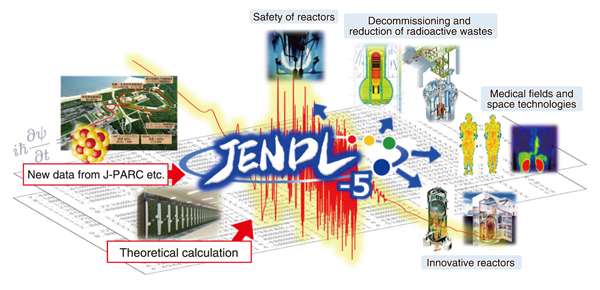
Fig.1 Schematic of the development and use of the nuclear data library JENDL
Simulation calculation of radiation, such as neutrons, plays an important role in the current research and development of nuclear energy. Data of nuclear reaction and decay (nuclear data) are the basic inputs of simulation calculation and largely affect the reliability of the calculated results. A nuclear data library is a database produced in a format suitable for simulation calculations. The first version of Japanese nuclear data library JENDL-1 was released in 1977. Although originally intended for the development of fast reactors, JENDL has expanded to support a wide range of nuclear energy development projects, including light water reactors, nuclear fusion reactors, and neutron shielding. In the previous version JENDL-4.0, which was released in 2010, the data on minor actinides and fission products were enhanced to support MOX fuel and high burnup.
Currently, in the field of nuclear energy, the development of various nuclear reactors is witnessing several innovations, and research and development on the decommissioning of nuclear power plants and reduction of the toxicity of radioactive wastes are also progressing. In addition to the field of energy, the use of radiation is also spreading in the field of medicine. Against this backdrop, for a wide range of radiation applications, besides drastically increasing the amount of neutron data, we have integrated data other than neutron reactions such as protons, deuterons, alpha particles, and photons. These data were released as JENDL-5 in December 2021 (https://wwwndc.jaea.go.jp/jendl/jendl.html).
Neutron reaction data form the core data of the nuclear data library, and in particular, calculation of the properties of nuclear reactors requires extremely high-precision data. Numerous neutron reaction data were measured at accelerator facilities worldwide, including the J-PARC. JENDL-5 reflects the knowledge of these latest measurements to improve the reliability of the dataset (Fig.1). Furthermore, for the decommissioning of nuclear reactors, various data, including data on contaminant elements in reactor structures, are required to evaluate activation by neutrons. To meet this requirement, JENDL-5 includes a large number of nuclides-in fact, 795 nuclides. This is more than 10 times that in JENDL-1 (77 nuclides), and nearly double that in JENDL-4.0 (406 nuclides). JENDL-5 covers all the naturally existing nuclides and can be used for simulations with a wide range of materials.
In various fields, including medicine, the use of charged particles such as protons, deuterons, and electrons is being promoted. Hence, the data of nuclear reactions induced by charged particles are important for promoting research and development. JENDL-5 increases the usability of charged particles by integrating the data that provided individually so far. Alpha particles generated by the decay of spent fuel become a source of radiation in spent fuels. JENDL-5 improves the reliability of the energy spectrum of neutrons emitted by alpha-particle nuclear reactions.
We hope that JENDL-5 will be used in a wide range of fields related to radiation, thereby promoting research and development.
(Osamu Iwamoto)